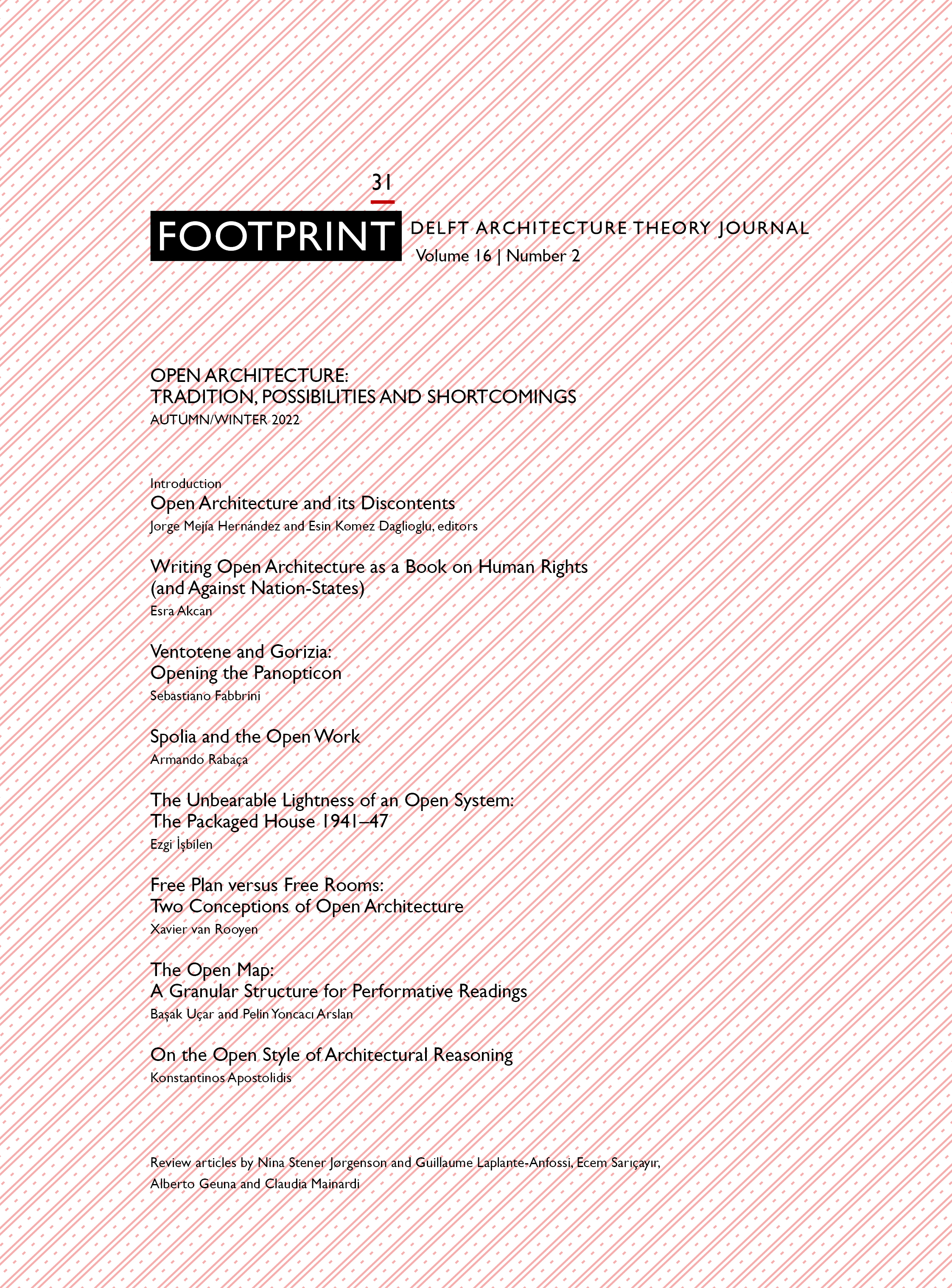Closing the Open System
Review of Nicolas Schöffer’s ‘La Tour Lumière Cybernétique’ (1973)
DOI:
https://doi.org/10.7480/footprint.16.2.6069Abstract
This essay looks at the algorithm written by Franco-Hungarian spatial artist Nicolas Schöffer for the Tour Lumière Cybernétique, a cybernetic light tower created for Paris’s La Défense district in the 1960s and ’70s. By revisiting the tower’s computer programme, this essay aims to understand how it was thought to operate as an open system by receiving data from its surrounding environment.
The review of the programme questions how the probability distributions Schöffer included in the algorithm to ensure a random treatment of predictable city data was imagined to avoid stagnation, repetition and programmatic saturation, all elements essential to maintaining the tower’s open framework. The goal of the essay is to provide a coherent interpretation of the computer programme as well as a comprehensive description of its mathematical elements, so that future readers of La Tour Lumière Cybernétique can gain an insight into the behaviour of the tower.
References
Schöffer, Nicolas. La Ville Cybernétique (Paris: Tchou, 1969).
Schöffer, Nicolas. Le Nouvel Esprit Artistique (Paris: Denoël/Gonthier, 1970).
Schöffer, Nicolas. La Tour Lumière Cybernétique (Paris: Denoël/Gonthier, 1973).
Downloads
Published
Issue
Section
License
Copyright (c) 2023 Nina Stener Jørgensen, Guillaume Laplante-Anfossi

This work is licensed under a Creative Commons Attribution 4.0 International License.
- Authors retain copyright and grant the journal right of first publication with the work simultaneously licensed under a Creative Commons Attribution License that allows others to share the work with an acknowledgement of the work's authorship and initial publication in this journal.
- Authors are able to enter into separate, additional contractual arrangements for the non-exclusive distribution of the journal's published version of the work (e.g., post it to an institutional repository or publish it in a book), with an acknowledgement of its initial publication in this journal.



